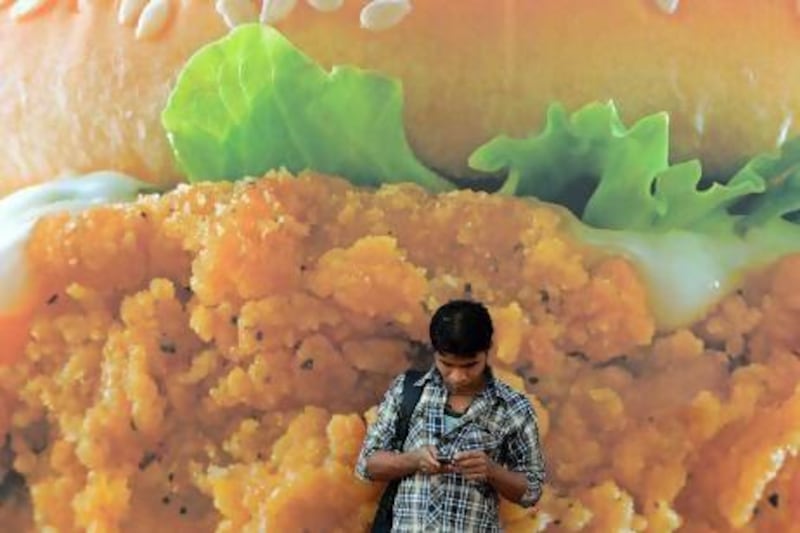MUMBAI // A few months ago, Corneliani, an Italian maker of svelte Dh7,000 suits, realised it was losing some business in India and discovered that it wasn't catering to overweight customers, especially those with pot bellies.
So in April it began a made-to-measure service that included options for shoppers who wanted "odd-sized" suits, overcoats or trousers, said Prem Dewan, who oversees Indian retail operations for Corneliani. Businessmen, celebrities and politicians have since come calling.
"It's especially the Indian belly - that is the issue and that's why we have started this made-to-measure service," said Mr Dewan. "We were losing customers because of this and since we started this service, we're able to cater to these clients."
Even as 400 million Indians - a third of the population - live in poverty, a decade-long economic boom has spawned a prosperous middle class and created dozens of billionaires, fuelling a rise in obesity, heart disease and diabetes in the biggest cities.
Now brands are rushing to win over a swelling population of heavier customers with luxurious tailor-made suits and plus-sized dresses.
India's branded apparel market is projected to more than double to Dh66 billion in 2017, according to the consultancy, Technopak Advisors, and this has encouraged brands from Ermenegildo Zegna Group to Corneliani to expand.
As economic growth slowed to 5 per cent last fiscal year, the weakest in a decade, more retailers have targeted niche shoppers, such as those buying large sizes, said Abhay Gupta, chief executive officer of New Delhi retail consulting firm Luxury Connect.
The World Health Organisation predicts that about 31 per cent of adult men in India will be overweight by 2015, up 22 per cent in a decade. In the United States 69 per cent of adults over 20 were overweight in 2008, with 62 per cent in the UK, according to WHO data.
An increased prevalence of obesity and diabetes may have roots in deprivation that goes back centuries. Poverty and food shortages primed Indian bodies over generations to get by on less, favouring individuals with genes that made them more efficient at storing fat.
A study published yesterday by the journal Diabetologia found that South Asians need to hit the treadmill and exercise more than Europeans of the same body size to reduce their risk of diabetes.
During a decade of economic growth averaging almost 8 per cent a year, diets turned fattier and lifestyles more sedentary, leading to a surge in obesity in a population more genetically predisposed to weight gain than the West, said Nikhil Tandon, professor of endocrinology and metabolism at the All India Institute of Medical Sciences.
"The amount of fat is inevitably more in Indians than in Westerners of the same body size," said New Delhi-based Professor Tandon.
Indians are also eating more meat as they get wealthier and developing a taste for fast food as international chains from Domino's Pizza to KFC and McDonald's increase their presence.
Online clothing retailer Myntra is ordering more large-size apparel to meet demand, said Ganesh Subramanian, the company's chief operating officer.
"Particularly in dresses for women, there is a propensity for large and extra large," he said.
About 20 per cent of men and women's clothing made by retailer Zovi.com is for XL and XXL sizes, compared with 15 per cent six months ago, said founder Manish Chopra.
"I think it was a latent demand and we were not addressing it," said Mr Chopra.
South Asians have a greater propensity to store fat around the waist, according to a review published in the International Journal of Obesity in February 2011.
That means obese Indians tend to have a "disproportionately large" belly that makes tailoring essential, said Shivank Aggarwal, the head of marketing at Shiva International Apparels, which runs a chain selling plus-sized clothing.
"Indians have a different body structure, so we have to design the product in a different manner," he said.
A large part of the population still goes hungry each day. More than three-quarters of the country's 1.2 billion people eat less than minimum targets set by the government. For every obese man there are 26 others who are underweight, a ratio second only to Ethiopia, according to Bloomberg Rankings.
New migrants to cities and the wealthy have a higher risk of being overweight, according to at least four peer-reviewed studies published between 2008 and 2012.





